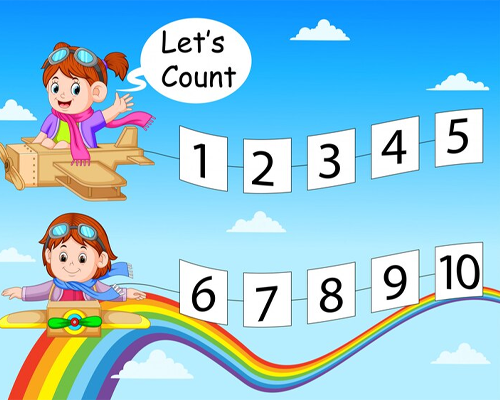Our Schools
Table of Contents
Education is a crucial aspect of a country’s growth and development. It shapes the future of a nation by providing individuals with the necessary knowledge and skills to thrive in their personal and professional lives. In India, the education system has undergone various reforms and changes over the years. However, there are still several challenges and opportunities that need to be addressed to ensure that every student receives a high-quality education. This article will discuss the challenges and opportunities in India’s education system.
The Current State of Education in India:
India has made significant progress in improving the literacy rate and increasing access to education. However, there are still disparities in the quality of teaching and access to education between urban and rural areas. According to UNESCO, the literacy rate in India was 77.7% in 2019. Although there has been progress compared to previous years, there is still much room for improvement. Moreover, the quality of education in India is a significant concern. The emphasis on rote learning, lack of critical thinking, and outdated teaching methods are hindering the development of the students.
Challenges in India’s Education System:
Access to Education: One of the biggest challenges in India’s education system is providing access to education to all students, especially in rural areas. According to a report by the Ministry of Human Resource Development, around 35% of the schools in India have only one teacher. Moreover, there is a significant dropout rate among girls due to various social and economic factors.
Quality of Education: The quality of education is another major challenge in India. The emphasis on rote learning, lack of critical thinking, and outdated teaching methods are hindering the development of the students. This is further aggravated by a lack of training and professional development opportunities for teachers.
Infrastructure and Resources: Many schools in India lack basic infrastructure and resources such as classrooms, libraries, and playgrounds. This affects the overall learning experience of the students and makes it difficult for them to learn in a conducive environment.
Education Policy: The education policy in India needs to be revamped to meet the current needs of the students. The policy needs to focus on providing quality education, promoting creativity and critical thinking, and ensuring equal access to education for all students.
Opportunities in India’s Education System:
Technological Advancements: With the advancement of technology, there are several opportunities to improve the quality of education in India. The use of technology in education can help in making learning more interactive and engaging for students. Moreover, it can also help in providing access to education in remote areas.
Public-Private Partnerships: The government can partner with private organizations to improve the quality of education in India. Private organizations can provide funding and expertise to improve infrastructure, teacher training, and curriculum development.
Skill-Based Education: The education system in India can focus on providing skill-based education to students. This can help in preparing students for the job market and reducing the skill gap in the country.
Conclusion:
Ekya, as part of the CMR Group of Institutions, has brought about significant changes in education through its focus on experiential learning, design thinking, and in-house curriculum development. These initiatives have been implemented to enhance the learning experience and ensure that students are equipped with the skills and knowledge required to succeed in the 21st century.
Experiential learning is a hands-on approach to education that encourages students to learn through doing. Ekya has incorporated this approach into its curriculum by providing students with opportunities to participate in real-world projects and activities that are relevant to their lives. This not only helps students to develop a deeper understanding of the subject matter but also enhances their critical thinking, problem-solving, and collaboration skills.
Design thinking is another area where Ekya has made significant strides. This approach emphasizes the importance of empathy, creativity, and experimentation in problem-solving. Ekya has incorporated design thinking into its curriculum by encouraging students to work on projects that require them to identify problems, brainstorm solutions, and develop prototypes. This helps to foster innovation and creativity in students while also developing their problem-solving skills.
The in-house curriculum curated by teachers who are regularly trained on advancements in education is yet another area where Ekya has brought about significant changes. The curriculum is designed to be student-centered and focuses on the development of critical thinking, creativity, and collaboration skills. The teachers at Ekya are trained to ensure that the curriculum is relevant and up-to-date, and they use a variety of teaching strategies to cater to different learning styles and needs.
Overall, these initiatives have helped Ekya to provide a well-rounded education to its students that focuses on the development of 21st-century skills. By incorporating experiential learning, design thinking, and a student-centered curriculum, Ekya has created a learning environment that is engaging, and relevant, and prepares students for success in the future.
Number Names From 1 to 100 for Kids in English
As parents, we all want our children to grow up knowledgeable and intelligent. This starts with providing them with a solid foundation in their early years, especially when it comes to education. One of the most fundamental aspects of early education is learning numbers and counting.
In this blog, we will discuss the importance of teaching your kids number names and providing tips and resources to make the process easier.
Why is it Important to Teach Number Names for Kids?

Number names are the words that we use to represent numerical values. For example, one, two, three, and so on. Teaching kids number names is important for several reasons:
Better Understanding of Numbers: When children learn the number names, they can better understand the value of numbers. For example, they will know that "ten" represents the value of 10, and "twenty" represents the value of 20.
Improved Counting Skills: When children learn number names, it helps them count more accurately and efficiently.
Preparing for Mathematical Concepts: Number names lay the foundation for more complex mathematical concepts that children will learn in the future, such as addition and subtraction.
Communication Skills: Learning number names is an important aspect of language development. It helps children to communicate about quantities and express themselves mathematically.
Know More
Click here to find out 56 Names of Shapes with Pictures
How to teach kids number names?

Teaching number names to kids can be a fun and engaging experience for both children and parents. Below are a few suggestions that can aid in simplifying the process:
Use Visual Aids: Using visual aids like flashcards or charts can be a helpful way to teach number names to children.
Sing Songs and Rhymes: Children love music, and singing songs and rhymes that involve number names can be a fun and effective way to help them learn.
Play Games: Games like "I Spy" or "What Comes Next?" Engaging children while teaching them number names can be an enjoyable approach.
Use Everyday Experiences: Incorporating number names into everyday experiences like counting toys or snacks can help children learn practically and meaningfully.
Also Read:
- 56 Names of Shapes with Pictures
- The Top 50 Free Educational Websites For Kids In (2023)
- Which is the best Educational Board for the Future: CBSE: ICSE : IGCSE?
- Why Knowing Inch To CM Conversion Is Important
Explore the range of Numbers from 1 to 100 along with their corresponding Number Names
Discover the English number names from 1 to 100 and empower children to convert names into numbers. Join us on an exciting journey of numerical exploration and language development.
| 1 = One | 2 = Two | 3 = Three | 4 = Four | 5 = Five |
| 6 = Six | 7 = Seven | 8 = Eight | 9 = Nine | 10 = Ten |
| 11 = Eleven | 12 = Twelve | 13 = Thirteen | 14 = Fourteen | 15 = Fifteen |
| 16 = Sixteen | 17 = Seventeen | 18 = Eighteen | 19 = Nineteen | 20 = Twenty |
| 21 = Twenty-one | 22 = Twenty-two | 23 = Twenty-three | 24 = Twenty-four | 25 = Twenty-five |
| 26 = Twenty-six | 27 = Twenty-seven | 28 = Twenty-eight | 29 = Twenty-nine | 30 = Thirty |
| 31 = Thirty-one | 32 = Thirty-two | 33 = Thirty-three | 34 = Thirty-four | 35 = Thirty-five |
| 36 = Thirty-six | 37 = Thirty-seven | 38 = Thirty-eight | 39 = Thirty-nine | 40 = Forty |
| 41 = Forty-one | 42 = Forty-two | 43 = Forty-three | 44 = Forty-four | 45 = Forty-five |
| 46 = Forty-six | 47 = Forty-seven | 48 = Forty-eight | 49 = Forty-nine | 50 = Fifty |
| 51 = Fifty-one | 52 = Fifty-two | 53 = Fifty-three | 54 = Fifty-four | 55 = Fifty-five |
| 56 = Fifty-six | 57 = Fifty-seven | 58 = Fifty-eight | 59 = Fifty-nine | 60 = Sixty |
| 61 = Sixty-one | 62 = Sixty-two | 63 = Sixty-three | 64 = Sixty-four | 65 = Sixty-five |
| 66 = Sixty-six | 67 = Sixty-seven | 68 = Sixty-eight | 69 = Sixty-nine | 70 = Seventy |
| 71 = Seventy-one | 72 = Seventy-two | 73 = Seventy-three | 74 = Seventy-four | 75 = Seventy-five |
| 76 = Seventy-six | 77 = Seventy-seven | 78 = Seventy-eight | 79 = Seventy-nine | 80 = Eighty |
| 81 = Eighty-one | 82 = Eighty-two | 83 = Eighty-three | 84 = Eighty-four | 85 = Eighty-five |
| 86 = Eighty-six | 87 = Eighty-seven | 88 = Eighty-eight | 89 = Eighty-nine | 90 = Ninety |
| 91 = Ninety-one | 92 = Ninety-two | 93 = Ninety-three | 94 = Ninety-four | 95 = Ninety-five |
| 96 = Ninety- six | 97 = Ninety-seven | 98 = Ninety-eight | 99 = Ninety-nine | 100 = Hundred |
Discover a comprehensive list of mathematical number names and ordinal number names from 1 to 20.
Enhance your mathematical vocabulary and understanding of ordinal numbers with this valuable resource.
| Number (in Digits) | Maths Number Names | Ordinal Number Names |
| 1 | One | First |
| 2 | Two | Second |
| 3 | Three | Third |
| 4 | Four | Fourth |
| 5 | Five | Fifth |
| 6 | Six | Sixth |
| 7 | Seven | Seventh |
| 8 | Eight | Eighth |
| 9 | Nine | Ninth |
| 10 | Ten | Tenth |
| 11 | Eleven | Eleventh |
| 12 | Twelve | Twelfth |
| 13 | Thirteen | Thirteenth |
| 14 | Fourteen | Fourteenth |
| 15 | Fifteen | Fifteenth |
| 16 | Sixteen | Sixteenth |
| 17 | Seventeen | Seventeenth |
| 18 | Eighteen | Eighteenth |
| 19 | Nineteen | Nineteenth |
| 20 | Twenty | Twentieth |
Resources to help teach kids number names

There are many resources available to help teach kids number names, including:
Books: There are many books available that focus on teaching number names to children, such as "One Fish, Two Fish, Red Fish, Blue Fish" by Dr. Seuss.
Know More
Click here to find out Top 50 Free Educational Websites For Kids In (2023)
Online Resources: There are numerous online resources available to help teach number names to children, including videos and interactive games.
Educational Apps: There are many educational apps available that focus on teaching number names to children, such as "Endless Numbers" and "Todo Math".
Ekya Schools: The Perfect Place to Teach Your Kids Number Names
If you are looking for a school that prioritises early education and provides a solid foundation for your child's future, Ekya Schools is an excellent choice. Ekya Schools is a group of Montessori and kindergarten schools in Bangalore that focuses on providing quality education for children in their early years.
Ekya Schools use a unique approach to early education that focuses on experiential learning, which involves learning through hands-on experiences and real-life situations. This approach is highly effective for teaching children number names, as it allows them to learn in a practical and meaningful way.
Conclusion
Teaching kids number name is an essential aspect of early education. By using fun and engaging teaching methods and resources, parents can help their children to learn number names more easily and effectively. Ekya Schools provides an excellent environment for children to learn number names and other important concepts in their early years.
Why Knowing Inch To CM Conversion Is Important
Understanding the Basics of Inch-to-CM Conversion
Before we dive into the importance of inch-to-cm conversion, let's first understand the basics of this conversion.How many centimeters are equivalent to one inch?
The measurement of one inch is equivalent to 2.54 centimeters.Calculator for Converting Inches to Centimetres:
Utilize the inch-to-centimeter converter provided below to quickly convert inches to centimeters. Input the inch value in the designated field and receive the converted measurement in centimeters instantly.Definition of centimeter:
A centimeter is a unit of length in the metric system, equal to one-hundredth of a meter. It is commonly used to measure small distances, such as the length or width of an object, and is abbreviated as "cm". Here are the conversions of centimeters to other units of length: 1 centimeter = 0.393701 inches 1 centimeter = 0.01 meters 1 centimeter = 10 millimeters 1 centimeter = 0.010936 yards 1 centimeter = 0.032808 feet. To measure centimeters, a measuring tape or ruler is utilized, and the units of measurement are specified. Centimeters are predominantly employed to measure small objects such as bottles, notebooks, pencils, and other diminutive items.What is an Inch?
An inch is a unit of measurement commonly used to express length or distance. It is primarily used in the United States, the United Kingdom, and other countries that use the Imperial system of measurement. One inch is equal to 1/12th of a foot or 2.54 centimeters in the metric system. The symbol for inch is "in" or double quotes (" "). In general, the inch is used to measure small distances, such as the length of a nail or the width of a finger, while longer distances are usually measured in feet, yards, or miles.Here are some common conversions of inches to other units of length:
1 inch = 2.54 centimeters 1 inch = 0.0254 meters 1 inch = 25.4 millimeters 1 inch = 0.0277778 yards 1 inch = 0.0833333 feet These conversion factors can be used to convert a length measurement in inches to the corresponding measurement in centimeters, meters, millimeters, yards, or feet.Inches to Centimetre Conversion Chart:
| 1 inch = 2.54 cm | 11 inch = 27.94 cm |
| 2 inch = 5.08 cm | 12 inch = 30.48 cm |
| 3 inch = 7.62 cm | 13 inch = 33.02 cm |
| 4 inch = 10.16 cm | 14 inch = 35.56 cm |
| 5 inch =12.70 cm | 15 inch= 38.1 cm |
| 6 inch = 15.24 cm | 16 inch= 40.64 cm |
| 7 inch = 17.78 cm | 17 inch = 43.18 cm |
| 8 inch = 20.32 cm | 18 inch = 45.72 cm |
| 9 inch = 22.86 cm | 19 inch = 48.26 cm |
| 10 inch = 25.40 cm | 20 inch = 50.8 cm |
Difference between Inches and Centimetre:
| Inch | Centimetre |
| Abbreviated as "in" | Abbreviated as "cm" |
| 1 inch is equal to 2.54 cm | 1 cm is equal to 0.393701 inch |
| Imperial system | Metric system |
| Commonly used in US, UK, and other Countries | Widely used around the world |
| 1 inch = 2.54 centimeters | 1 centimeter = 0.3937 inches |
| Typically used to measure larger objects and distances | Typically used to measure smaller objects and distances |









Leave a reply